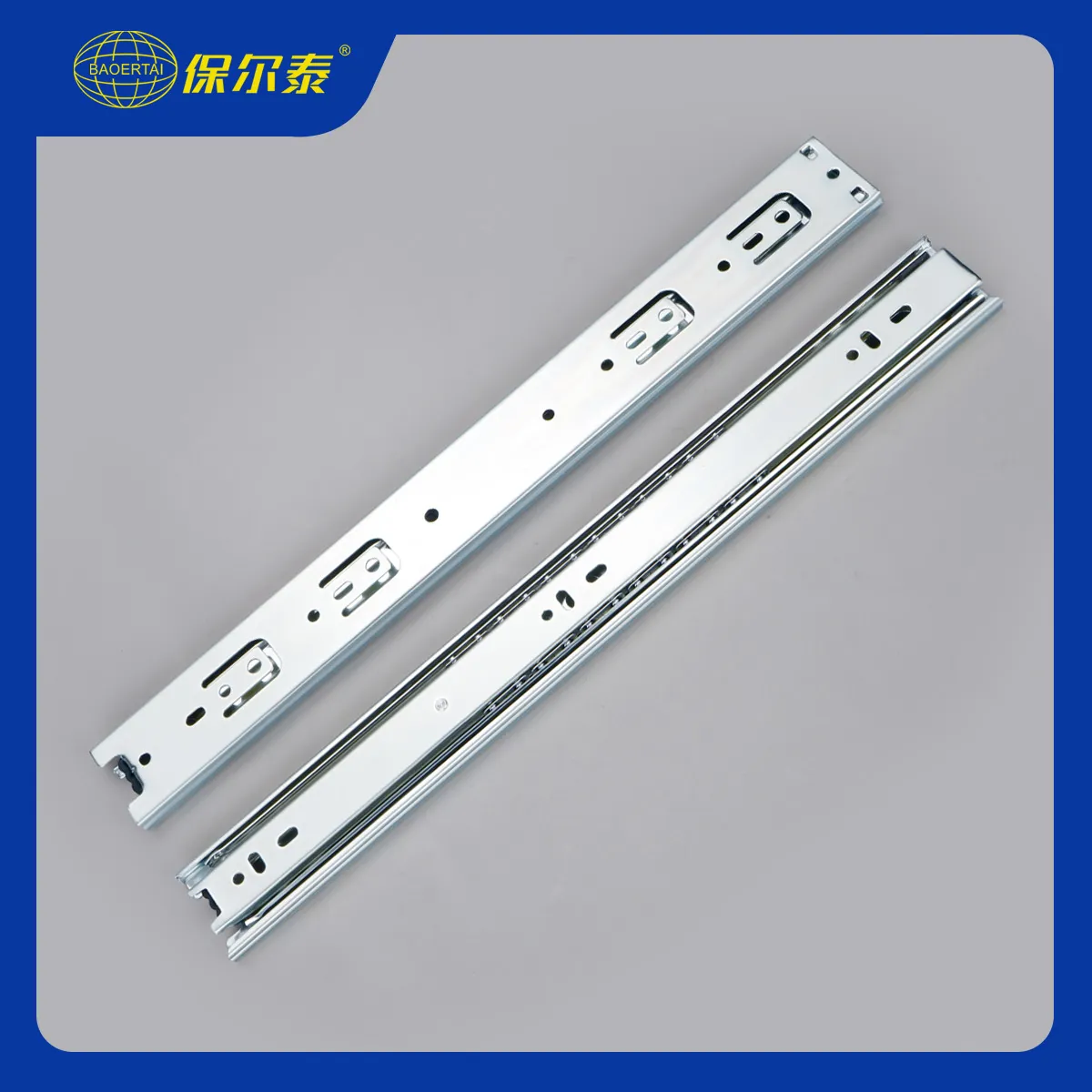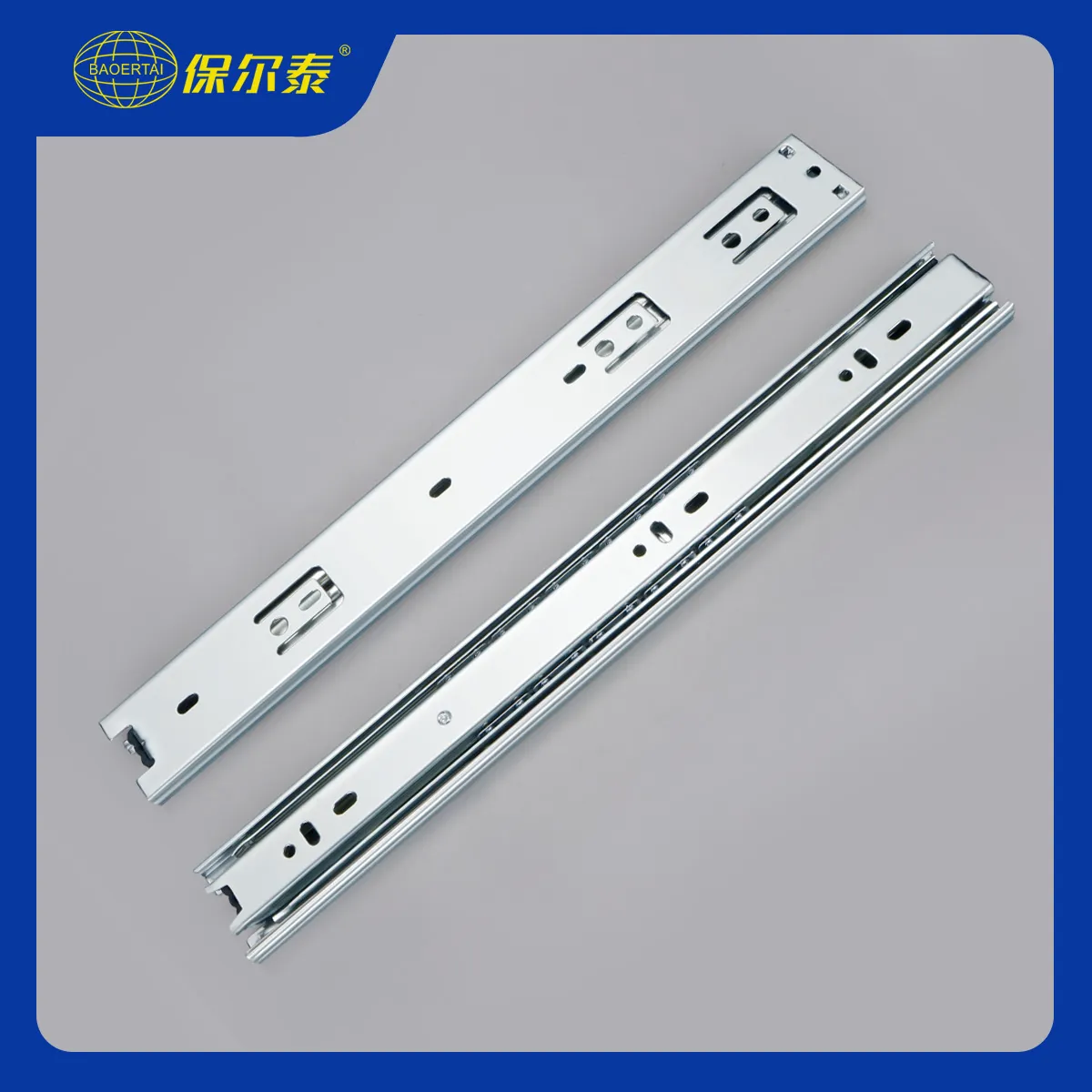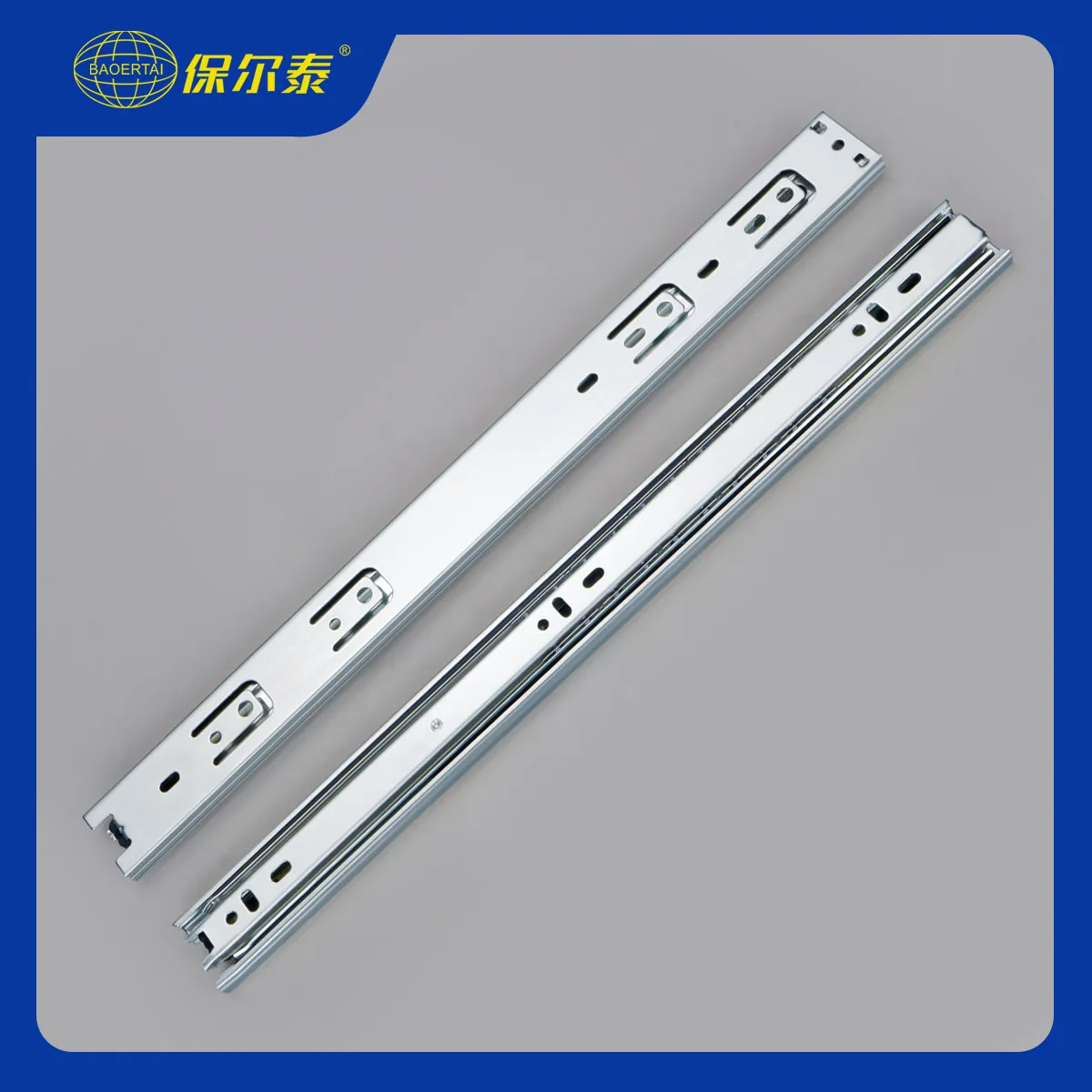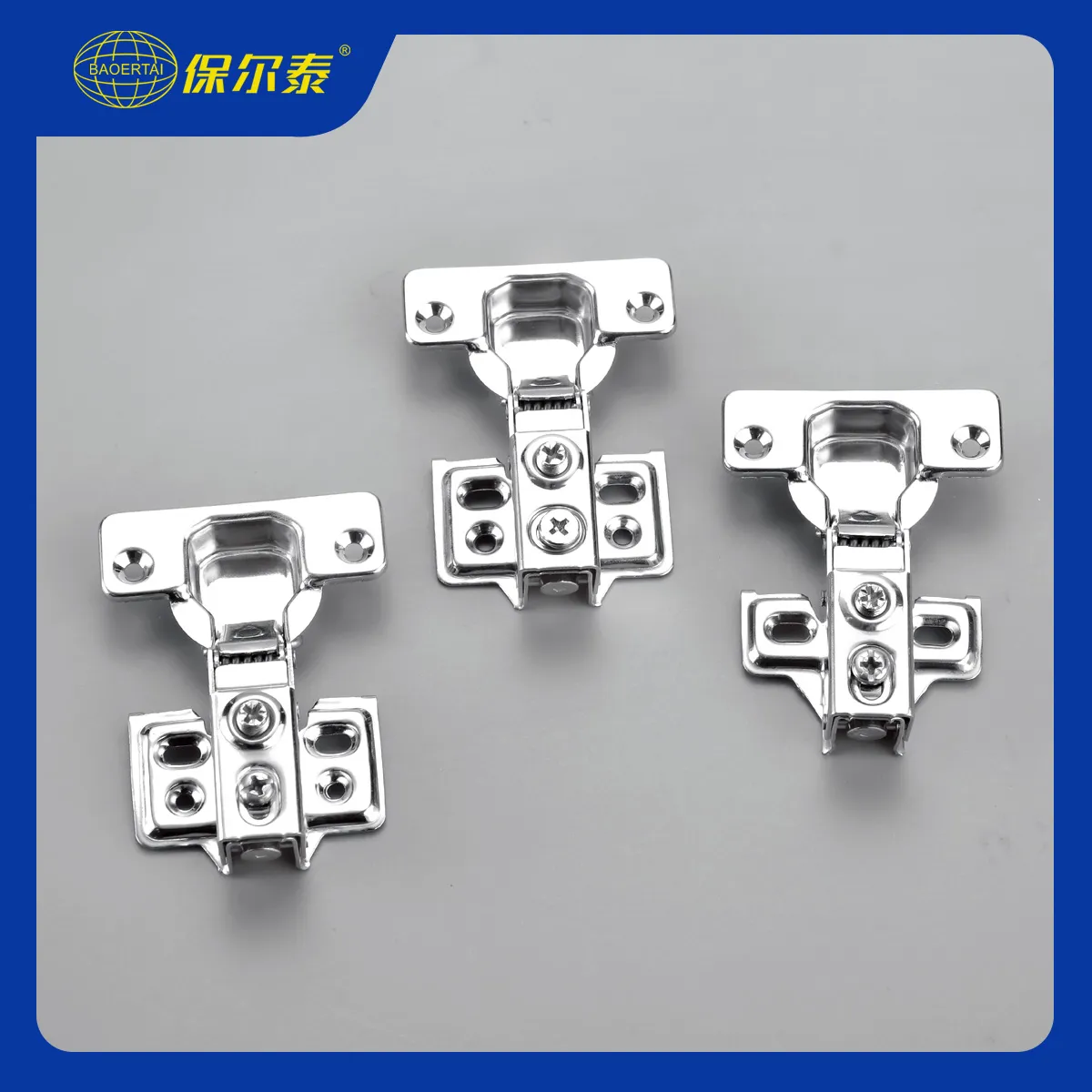A jammed dresser drawer can halt your daily routine and frustrate end customers. Whether you’re a furniture maker, retailer, or a DIY enthusiast, quick troubleshooting and effective repair methods are key to restoring smooth operation. In this guide, we’ll walk you through detailed steps—from diagnosis to replacement—and share expert tips from Baoertai Hardware, your trusted drawer slide manufacturer and OEM partner.
Diagnose the Problem: Identify the Slide Type and Jam Source
Different drawer slide systems require specific approaches. Start by determining whether you have:
- Side-mount ball-bearing slides – Common in modern furniture; smooth but sensitive to debris.
- Under-mount concealed slides – Hidden beneath, often feature soft-close or push-to-open.
- Wooden runners or center guides – Traditional design, prone to warping and wear.
- Once identified, note where the jam occurs: at the front, mid-track, or near the back.
Remove the Drawer Safely
- Fully extend the drawer until it stops.
- Locate the release mechanism (tabs on ball‑bearing slides or levers on under-mount).
- Press and lift (or unlatch) to disengage.
- Pull the drawer straight out to avoid bending the slides.
- Handle the drawer carefully—protect any finish or laminated surface with cloth padding.
Clean and Inspect Tracks Thoroughly
- Vacuum or brush out dust, hair, and debris.
- Wipe tracks with a damp cloth to remove grease build-up.
- Examine ball bearings or rollers for corrosion or missing parts.
- Check wooden runners for cracks, splinters, or swelling.
- A clean and intact track is the foundation for smooth sliding.
Apply the Right Lubricant
Choosing the proper lube extends slide life:
- Silicone spray: Ideal for metal and plastic slides; resists dust attraction.
- Teflon-based dry lubricant: Provides long-lasting, friction-free movement.
- Wax stick or paraffin: Best for wooden runners; apply sparingly.
- Spray or rub a thin, even layer. Cycle the drawer 5–10 times to distribute.
Realign Slides and Tighten Fasteners
Misalignment often leads to jamming:
- Loosen screws on both cabinet and drawer side.
- Adjust the slide so it sits perfectly parallel.
- Use a level to confirm horizontal alignment.
- Retighten screws firmly without overtightening.
- Proper alignment reduces uneven wear and ensures full extension.
Replace or Upgrade the Slides
If damage is severe or performance remains poor:
- Measure accurately: Length, side-mount vs. under-mount, load capacity.
- Select upgraded models: Soft-close, push-to-open, full-extension ball-bearing.
- Choose high-load or heavy-duty slides for thicker, weight-bearing drawers.
- Baoertai Hardware offers a wide range of precision-engineered slides, customizable in finish, length, and closing mechanism to fit any furniture design.
Pro Tips for Manufacturers and Buyers
- Standardize on quality hardware to reduce after-sales issues.
- Offer installation guides or video tutorials as value-adds.
- Bundle soft-close or push-open options to enhance perceived luxury.
- Partner with an OEM like Baoertai Hardware for tailored branding, packaging, and just-in-time delivery.
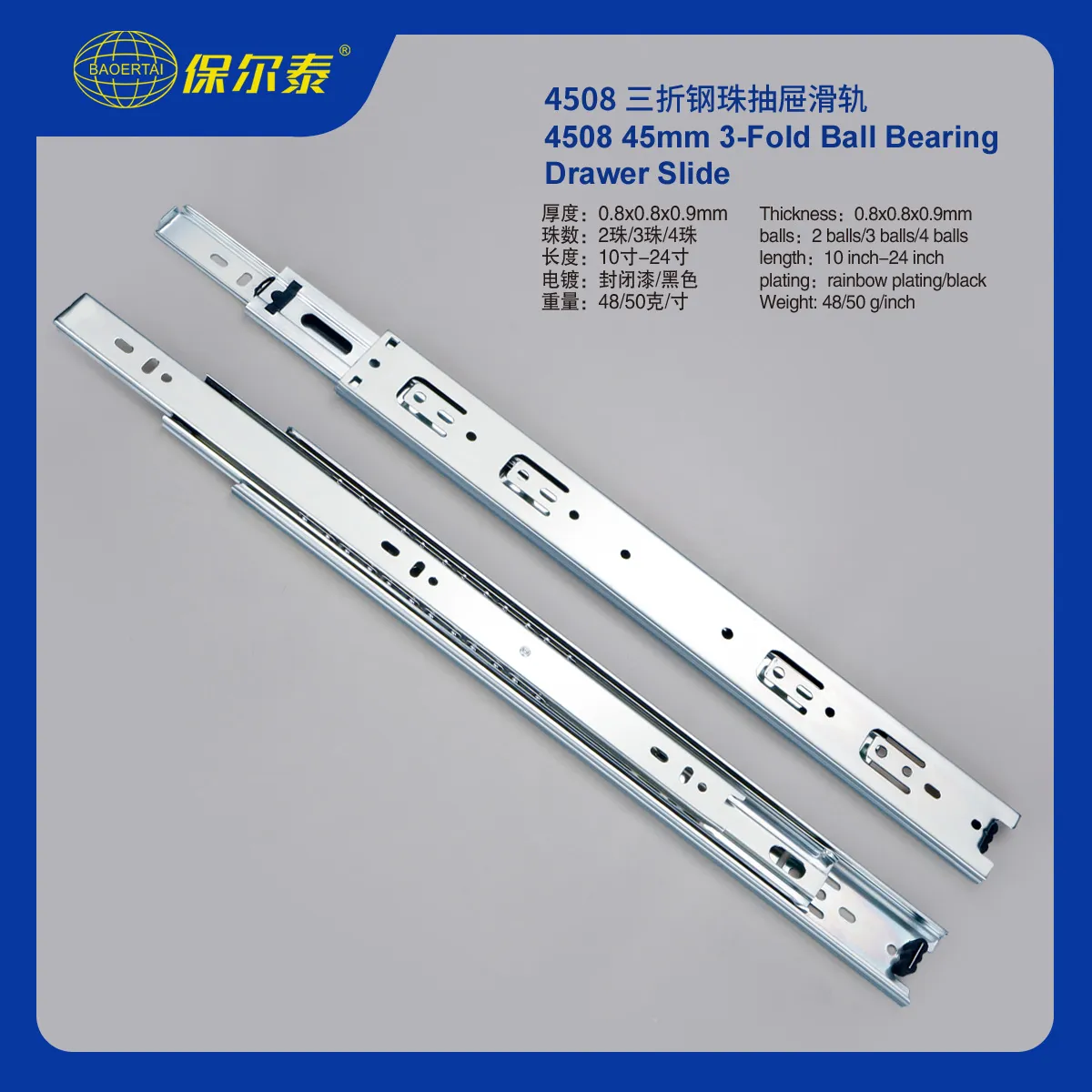


Conclusion
A jammed drawer slide doesn’t have to be a headache. By systematically diagnosing, cleaning, lubricating, aligning—and if needed, upgrading—you can restore effortless drawer operation. For furniture makers, specifiers, and B2B buyers, investing in premium slides from Baoertai Hardware ensures consistent quality and customer satisfaction.
Ready to upgrade your drawer performance? Contact Baoertai Hardware today for customized slide solutions and OEM services tailored to your production needs.



